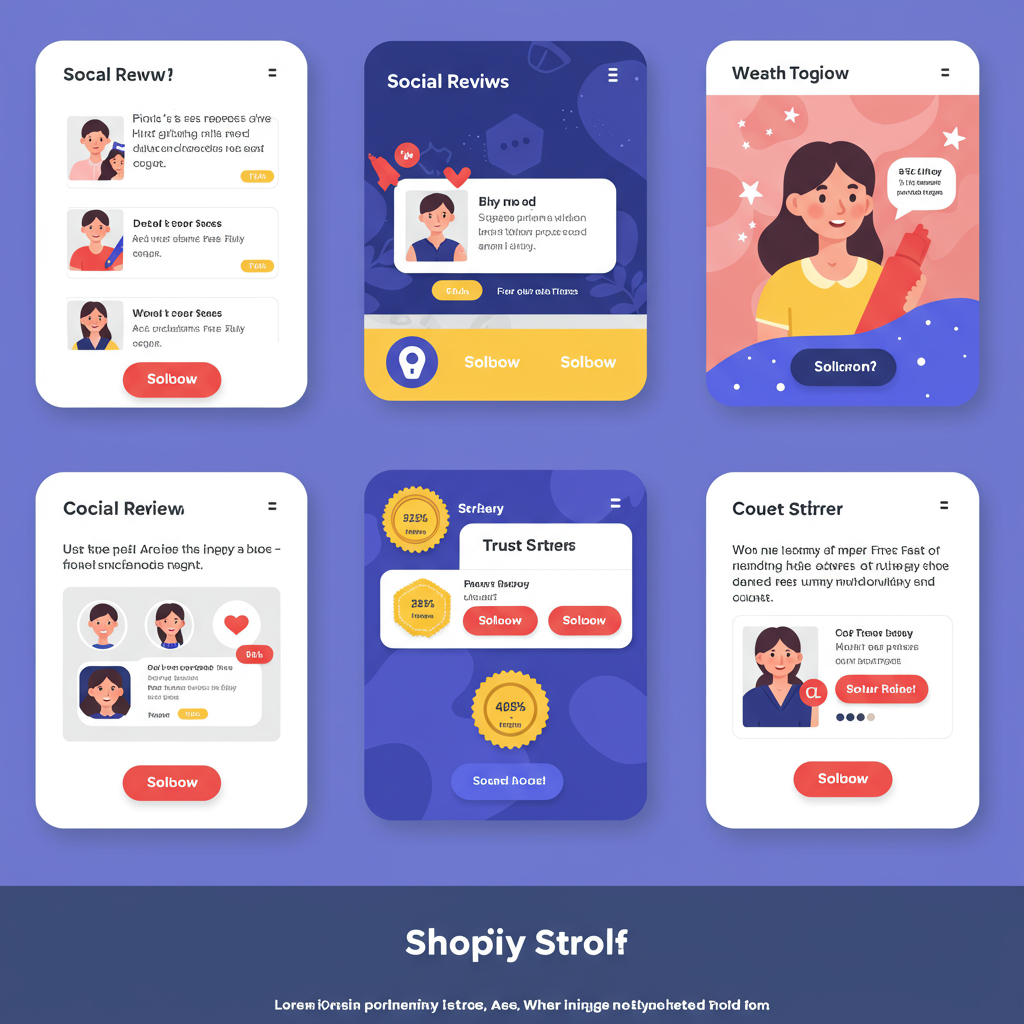Discover how leveraging customer reviews, user-generated content, trust badges, and more can significantly increase conversions and build lasting trust for your Shopify store.
As a Shopify merchant, I’m constantly looking for ways to build trust and encourage purchases. One of the most powerful tools in my arsenal, and one I believe every store owner should master, is social proof.
What exactly is social proof? It’s the psychological phenomenon where people assume the actions of others in an attempt to reflect correct behavior for a given situation. In e-commerce, it means showing potential customers that others have already bought, used, and loved your products.
Think about it: when you’re shopping online, aren’t you more likely to buy something with dozens of positive reviews than a product with none? That’s social proof in action, and it’s absolutely critical for conversion on your Shopify store.
My journey with social proof started when I realized my traffic wasn’t converting as well as I hoped. I had great products, but visitors weren’t taking the leap. I needed to bridge that trust gap, and social proof became my solution.
The first, and arguably most impactful, type of social proof I focused on was customer reviews and testimonials. These are direct endorsements from people who have already experienced your product or service.
Collecting reviews is paramount. I started by integrating a robust review app into my Shopify store. This allowed me to automatically send follow-up emails to customers after their purchase, gently prompting them to leave a review.
I also made it incredibly easy for customers to leave reviews directly on the product page. The less friction, the more likely they are to share their thoughts. Offering a small discount on a future purchase for leaving a review can also be a great incentive.
Once collected, displaying these reviews strategically is key. I ensure that every product page prominently features its star rating and a selection of recent reviews. A dedicated “Reviews” page on my site also aggregates all feedback, showcasing the overall positive sentiment.
Beyond text, I actively encourage customers to submit photo and video reviews. Visual proof is incredibly powerful, as it allows potential buyers to see the product in real-world scenarios, often making it more relatable and trustworthy.
Don’t shy away from negative reviews either. While no one wants them, responding professionally and publicly to a negative review can actually build more trust than ignoring it. It shows you’re attentive and committed to customer satisfaction.
Another fantastic form of social proof is User-Generated Content (UGC). This includes photos, videos, and posts created by your customers featuring your products, often shared on social media.
I encourage UGC by running contests, creating unique hashtags for my brand, and actively resharing customer content on my own social media channels. This not only provides authentic content but also makes customers feel valued.
Displaying UGC on my Shopify store, perhaps through an Instagram feed integration or a dedicated gallery page, adds a dynamic and authentic layer of social proof that traditional product photos can’t replicate.
Social media engagement itself serves as a form of social proof. High follower counts, numerous likes, and shares on your posts signal popularity and credibility. I make sure my social media links are visible and encourage sharing.
Influencer marketing has also proven to be a game-changer for me. Collaborating with relevant influencers who genuinely love my products allows me to tap into their established audience and leverage their credibility.
When an influencer posts about my product, I often share their content on my own channels and, with permission, sometimes even feature their endorsement on my product pages or homepage.
Trust badges and certifications are another non-negotiable for my Shopify store. These visual cues, like SSL certificates, secure payment gateway logos (Visa, MasterCard, PayPal), and money-back guarantee badges, instantly reassure customers about security and reliability.
I place these badges strategically in my footer, on product pages near the “Add to Cart” button, and during the checkout process. They silently communicate trustworthiness and reduce purchase anxiety.
Popularity indicators are subtle yet effective. I use apps that display “X people are viewing this product right now” or “X items sold in the last 24 hours.” These create a sense of urgency and show that others are actively interested.
Similarly, “recently purchased” notifications that pop up on the screen can be incredibly persuasive. They create a dynamic sense of activity and validate the decision to buy.
Implementing these social proof elements on Shopify is straightforward thanks to the vast app ecosystem. There are dedicated apps for reviews, UGC, trust badges, and popularity notifications, making integration seamless.
My advice is to start with the basics: a solid review collection and display system. Then, gradually layer on other forms of social proof that align with your brand and customer base.
Always prioritize authenticity. Fake reviews or inflated numbers will quickly erode trust. Genuine social proof, even if it’s just a few honest reviews to start, is far more valuable.
Don’t just set it and forget it. Regularly monitor your social proof, respond to reviews, update your UGC, and A/B test different placements or types of social proof to see what resonates best with your audience.
Measuring the impact of social proof is crucial. I closely track my conversion rates before and after implementing new social proof strategies. I also look at metrics like review submission rates and engagement with UGC.
Ultimately, social proof isn’t just a marketing tactic; it’s about building a community around your brand and fostering genuine trust. It transforms hesitant browsers into confident buyers.
I truly believe that by strategically implementing these social proof elements, you can significantly boost your Shopify store’s conversion rates and build a loyal customer base.
What do you think about these strategies? Have you found success with social proof on your Shopify store? I’d love to hear your thoughts and experiences!






